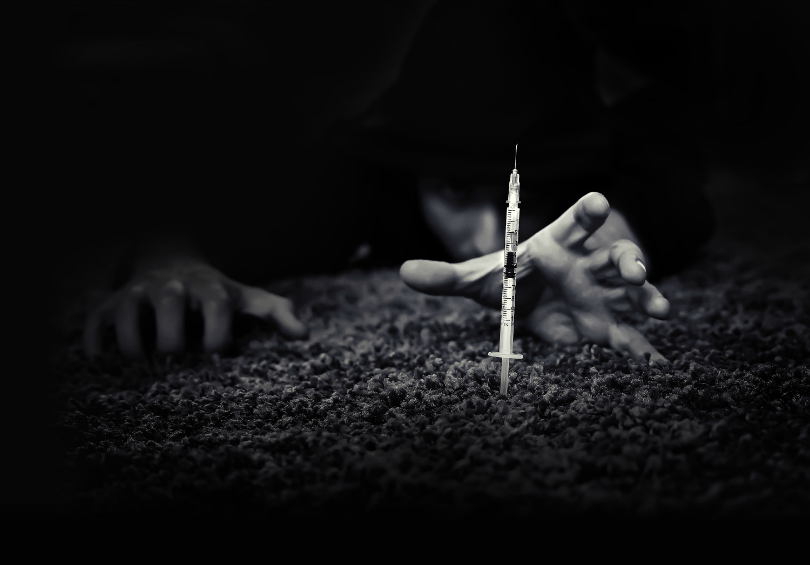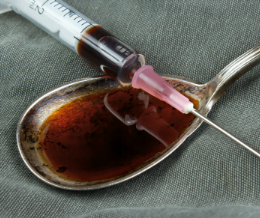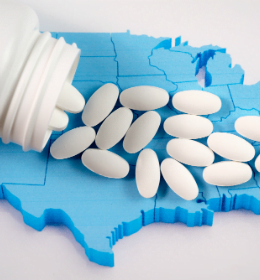What to Expect from Addiction Treatment With Methadone Pills
Opioids claim the lives of 115 Americans every single day. In fact, hundreds of thousands of families in the U.S. mourned the lives of 630,000 people who died from drug overdose between 1999 and 2016.
So, yes, the threat of opioid is real, and it’s as life-threatening as it can get.
Granted, achieving sobriety may seem impossible, especially to those who fear opiate withdrawal symptoms. But the possibility of a losing your life due to overdose is much scarier.
The good news is, you don’t have to become part of the statistics. Treatment through methadone pills can combat narc addiction and let you live a meaningful life once again.
What exactly are these pills though? What can you expect from methadone treatment?
We’ll address all these questions and more in this post, so, read on.
What is Methadone?
Methadone falls under the opiate or narcotic class of analgesic medications. Its roots trace back to the Second World War. Its introduction to the United States led to its wide use as a treatment for people suffering from extreme pain.
In terms of pain treatment, this drug works by altering the processes behind the brain’s and nervous’ system response to pain. To put things in perspective, 31 million Americans are suffering from back pain alone. As if that’s not enough, as much as a third of U.S. adults experience more pain than people from other countries.
No wonder methadone has become a go-to for millions of Americans with chronic pain. But that’s not all that the drug can do.
It now also sees use in the world of addiction treatment. It may sound counter intuitive, but studies confirm its benefits in people recovering from opiate addiction.
How Does Methadone Work?
So… How does methadone treatment help you become sober? First, let’s take a look at how someone feels when on this medication.
As mentioned above, methadone affects the brain’s and nervous system’s pain response processes. These changes then result in relief from pain. Note that the drug needs more time to take effect than more potent painkillers, such as morphine.
Contrary to popular belief, methadone doesn’t deliver “euphoric” effects. In fact, it has the opposite effect; it blocks these highs that codeine, morphine, and oxycodone are notorious for.
It does, however, give similar sensations. But what’s more important is its ability to prevent symptoms associated with opiate withdrawal.
In essence, methadone replaces the more dangerous opioids in a patient’s system with milder or reduced effects. In the world of addiction treatment, this is (or part of) “medication-assisted” or “opioid replacement therapy“.
How Opiate Treatment Works with Methadone Pills
Methadone is available in several forms, with the pill and liquid being the most common. You’ll also find this drug in wafer form.
In most cases, doctors instruct their patients to take the drug once a day. How long before the effects wear off depends on how high the dose is. In general, though, the pain-relieving effects last between four and eight hours.
The Substance Abuse and Mental Health Services Administration (SAMHSA) recommends higher doses of methadone for patients with heroin addiction. According to the organization, higher doses can help them stick to their treatment programs.
Methadone maintenance treatment is more effective when administered as part of a more comprehensive treatment program. That said, it’s best that you also receive counseling and participate in other drug addiction support programs.
You can only receive methadone under physician supervision. This means you can only take the medicine in the presence of a doctor. But once your body has acclimatized to it, such as when you’ve shown consistent progress, you may receive permission for at-home methadone treatment.
Keep in mind that the law only authorizes SAMHSA-certified opioid treatment programs to dispense this drug.
How Long Does Methadone Treatment Last?
There’s no one-size-fits-all when it comes to methadone treatment. You may need the treatment longer (or shorter) compared to other patients.
However, most doctors opt for a 12-month length of methadone treatment programs. There are even some who need to undergo the treatment for longer than one year.
What’s important is to avoid going cold turkey or suddenly going off the drug. Methadone is still a drug, so a sudden cease of its use can cause withdrawal symptoms. That would only defeat its main purpose.
As such, even if you feel fine and ready to stop treatment, talk to your doctor first. Methadone can pave the way for your opiate recovery, but only if you take it as instructed.
Potential Side Effects
Like with any other medication, methadone side effects can still arise. You should take these seriously, as some of they may warrant professional medical help.
Contact your doctor if you or someone you know on methadone exhibits the following:
- Shallow breathing or breathing difficulties
- Lightheadedness
- Rashes or hives
- Swelling affecting the throat, tongue, lips, or even the entire face
- Chest pains
- Racing or pounding heart
- Confusion or hallucination
Although methadone is safe (doctors have prescribed it for many years now), some people may have adverse reactions to it. So, keep a lookout for these side effects of methadone and react promptly if you notice them.
A Promising Outlook
Without treatment, those who have an addiction to opioid has a 90 percent chance of relapse. Medication, such as methadone pills, cut this rate by half. However, methadone patients need to continue their medication as directed, or they also run the risk of relapsing.
As such, you need to prepare yourself for long-term treatment with methadone. It may take a year or more, but the benefits that you’ll enjoy are more than worth it.
If you’re ready to talk about your opiate addiction or know someone who needs intervention, don’t wait until it’s too late to get help. You should also check out our methadone blogs to find out more about methadone treatment.
You can also give us a call at (855) 976- 2092.




 Opiate addiction affects every single aspect of a person’s life, from their career to personal relationships and everything in between, so why can’t methadone help?. I have witnessed this firsthand, just like many other grieving friends and family who have watched drugs devastate some of the people they love the most. Having seen it firsthand has led me to believe that
Opiate addiction affects every single aspect of a person’s life, from their career to personal relationships and everything in between, so why can’t methadone help?. I have witnessed this firsthand, just like many other grieving friends and family who have watched drugs devastate some of the people they love the most. Having seen it firsthand has led me to believe that  My friend went through methadone maintenance where doctors use methadone, an opioid and painkiller with less addictive qualities, to wean a person off heroin or another opiate. This way, they are still receiving some form of an opioid to satisfy their craving, but they aren’t ingesting dangerous, even deadly quantities of heroin or prescription pills.
My friend went through methadone maintenance where doctors use methadone, an opioid and painkiller with less addictive qualities, to wean a person off heroin or another opiate. This way, they are still receiving some form of an opioid to satisfy their craving, but they aren’t ingesting dangerous, even deadly quantities of heroin or prescription pills.
 It’s no secret that opioid addiction is are a major problem, not only in the United States but also across the world, with thousands of lives lost every year to the preventable yet powerful vices of illegal substances.
It’s no secret that opioid addiction is are a major problem, not only in the United States but also across the world, with thousands of lives lost every year to the preventable yet powerful vices of illegal substances. I believe greater public awareness can make a positive impact, as can outreach about prevention and treatment such as methadone maintenance. This is especially important as opioid addiction takes over more and more lives, with addictions to heroin and prescription pills.
I believe greater public awareness can make a positive impact, as can outreach about prevention and treatment such as methadone maintenance. This is especially important as opioid addiction takes over more and more lives, with addictions to heroin and prescription pills. Methadone maintenance treatment was first introduced in the 1970s, and since then, it’s been used to treat millions of patients struggling with the detox process. In 2009, there were over 100,000 recovering heroin addicts on methadone treatment plans according to Harvard Medical School’s Harvard Health Publications.
Methadone maintenance treatment was first introduced in the 1970s, and since then, it’s been used to treat millions of patients struggling with the detox process. In 2009, there were over 100,000 recovering heroin addicts on methadone treatment plans according to Harvard Medical School’s Harvard Health Publications. If you or a loved one is suffering from opiate addiction, now is the time to seek help before it’s too late. Getting on the path to recovery is the only way to achieve a healthier, happier lifestyle, not only for yourself but for those who love you and want to see you safe and content.
If you or a loved one is suffering from opiate addiction, now is the time to seek help before it’s too late. Getting on the path to recovery is the only way to achieve a healthier, happier lifestyle, not only for yourself but for those who love you and want to see you safe and content.